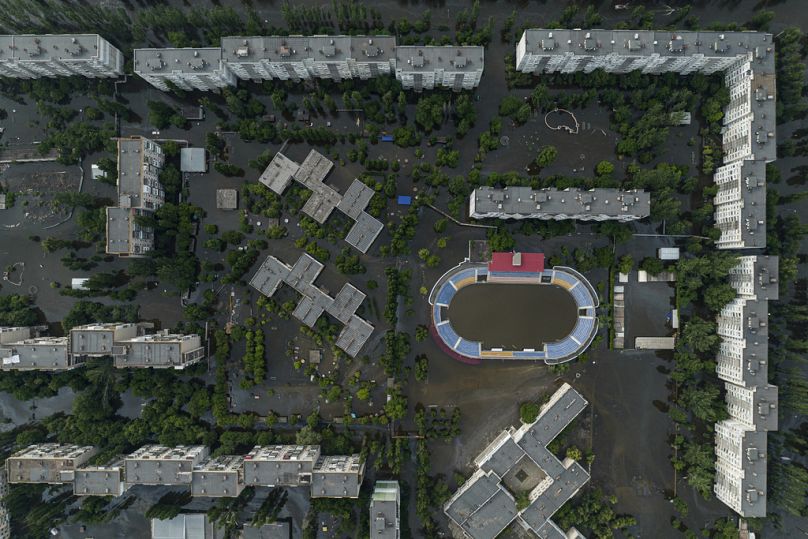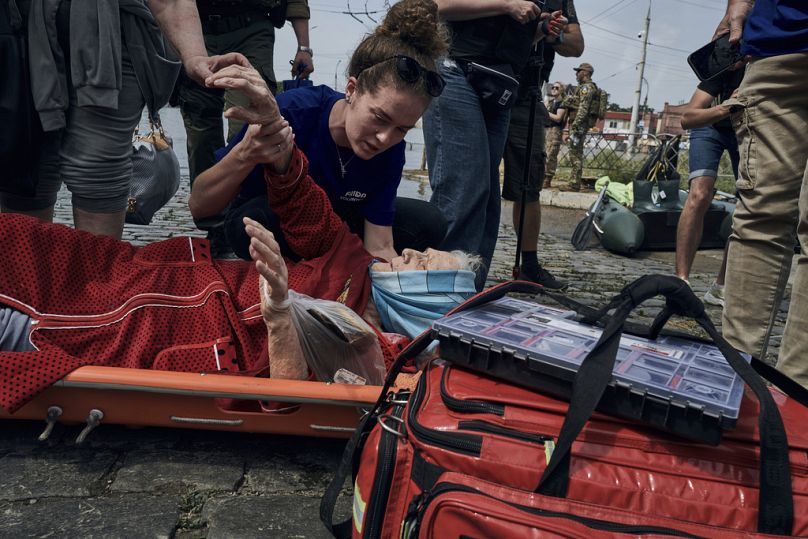The destruction of the Kakhovka Dam was a fast-moving disaster that is swiftly evolving into a long-term environmental catastrophe affecting drinking water, food supplies and ecosystems reaching into the Black Sea.
The short-term dangers can be seen from outer space - tens of thousands of parcels of land flooded, and more to come. Experts say the long-term consequences will be generational.
For every flooded home and farm, there are fields upon fields of newly planted grains, fruits and vegetables whose irrigation canals are drying up. Thousands of fish were left gasping on mud flats. Fledgling water birds lost their nests and their food sources. Countless trees and plants were drowned.
If water is life, then the draining of the Kakhovka reservoir creates an uncertain future for the region of southern Ukraine that was an arid plain until the damming of the Dnieper River 70 years ago. The Kakhovka Dam was the last in a system of six Soviet-era dams on the river, which flows from Belarus to the Black Sea.
Then the Dnieper became part of the front line after Russia's invasion last year.
“All this territory formed its own particular ecosystem, with the reservoir included,” said Kateryna Filiuta, an expert in protected habitats for the Ukraine Nature Conservation Group.
The long term
The waters slowly began to recede on Friday, only to reveal the environmental catastrophe looming.
The reservoir, which had a capacity of 18 cubic kilometres, was the last stop along hundreds of kilometres of the river that passed through Ukraine's industrial and agricultural heartlands. For decades, its flow carried the runoff of chemicals and pesticides that settled in the mud at the bottom.
Ukrainian authorities are testing the level of toxins in the muck, which risks turning into poisonous dust with the arrival of summer, said Eugene Simonov, an environmental scientist with the Ukraine War Environmental Consequences Working Group, a non-profit organisation of activists and researchers.
The extent of the long-term damage depends on the movement of the front lines in an unpredictable war. Can the dam and reservoir be restored if fighting continues there? Should the region be allowed to become arid plain once again?
Ukrainian Deputy Foreign Minister Andrij Melnyk called the destruction of the dam “the worst environmental catastrophe in Europe since the Chernobyl disaster.”
The fish and waterfowl that had come to depend on the reservoir "will lose the majority of their spawning grounds and feeding grounds,” Simonov said.
Downstream from the dam are about 50 protected areas, including three national parks, said Simonov, who co-authored a paper in October warning of the potentially disastrous consequences, both upstream and downstream, if the Kakhovka Dam came to harm.
It will take a decade for the flora and fauna populations to return and adjust to their new reality, according to Filiuta. And possibly longer for the millions of Ukrainians who lived there.
In Maryinske, the farming community, they are combing archives for records of old wells, which they'll unearth, clean and analyse to see if the water is still potable.
“Because a territory without water will become a desert,” the mayor said.
Further afield, all of Ukraine will have to grapple with whether to restore the reservoir or think differently about the region's future, its water supply, and a large swath of territory that is suddenly vulnerable to invasive species - just as it was vulnerable to the invasion that caused the disaster to begin with.
“The worst consequences will probably not affect us directly, not me, not you, but rather our future generations because this man-made disaster is not transparent,” Filiuta said. “The consequences to come will be for our children or grandchildren, just as we are the ones now experiencing the consequences of the Chernobyl disaster, not our ancestors.”













